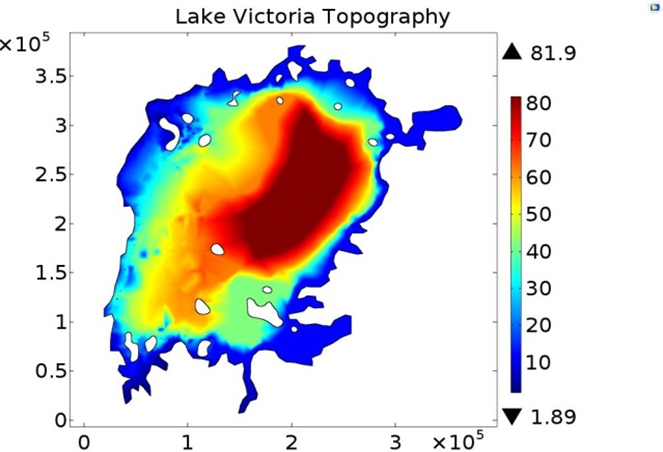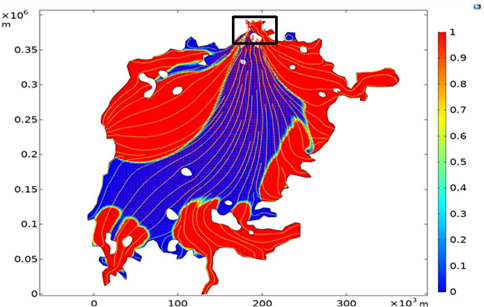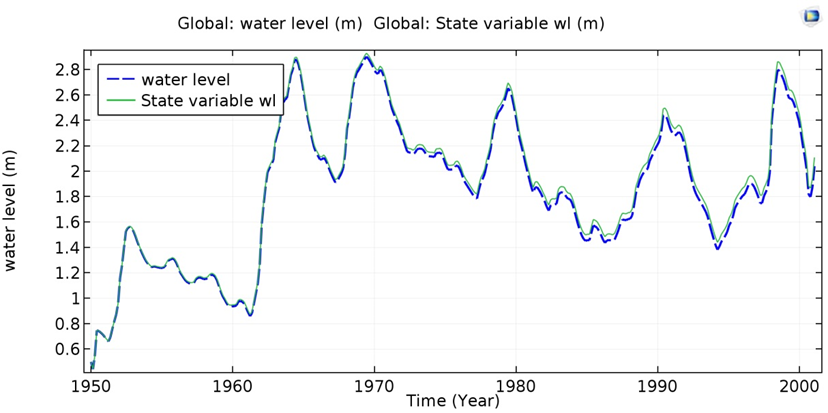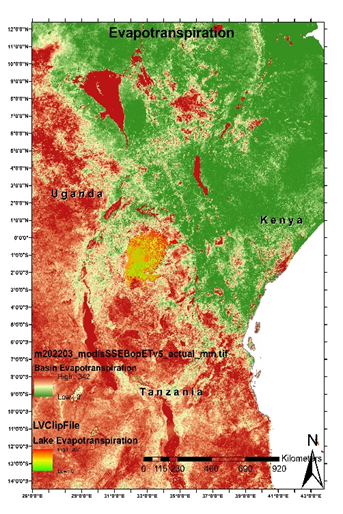Understanding lake hydrodynamics
Describe the problem the research seeks out to solve
The assessment identified how the world’s second-largest freshwater body Lake Victoria as well as near lakeshore areas have been over polluted by several manmade activities and climate impacts, which can cause great misfortune for millions of people living in the region. The work regarding near lakeshore pollution in Lake Victoria was conducted by examining the current research methodological gap and combining it with climate effects and focuses on bathymetry mapping development together with knowledge of gap transport hydrodynamic, aiming to give new insight into lake hydrodynamics.


What is the research about?
This thesis leverages the development of lake hydrodynamic studies containing the necessity of systematic lake bathymetry development, lake flows, water level validation, seasonal trends, tracer transport concentration, understanding flow behaviors and pollution transport processes validated by wind hydrodynamic and numerical hydrostatic stability. A numerical and computational method has been developed to estimate and map hydrodynamic processes that have measured pollution transport numerical model in catchment scales, which is of importance for the Sustainable Development Goals for health, food and water security.

Describe the result of the new findings and its importance for society

This work focuses on lake hydrodynamics and pollution transport processes in lake and lakeshores within a water quality and climate change context, using Murchison bay and Lake Victoria catchment, in East-Africa, Uganda, Kenya and Tanzania as a case study. The results indicate that the influences of lake hydrodynamics together with bathymetry mapping and climate effect played a significant role to change lake water quality. In addition, the development processes have improved the understanding of the linkage among the climate effect, lake bathymetry, lake flow, water levels, hydro-meteorological and biological processes, wind hydrodynamics, and hydrodynamic stability which in the context of this thesis, are related to the key processes governing method that is the vertically integrated 2D shallow water equations model.
How can your research be used?
The research can be used for lake flow control, monitoring of water level, climate risk assessment and pollution transport processes – which are of great importance to control water quality. It also provides knowledge into which lake is more eutrophic and more affected by climate change. By understanding lake hydrodynamics for Lake Victoria we can use the same concept to understand Sweden’s largest lakes, such as Mälaren and Vänern. The results can also be used in eutrophic lake Råcksta Träsk and Vallentunasjön. This work will help to improve the water quality in lakeshore areas in the near future.
Contact
Seema Paul
seemap@kth.se
